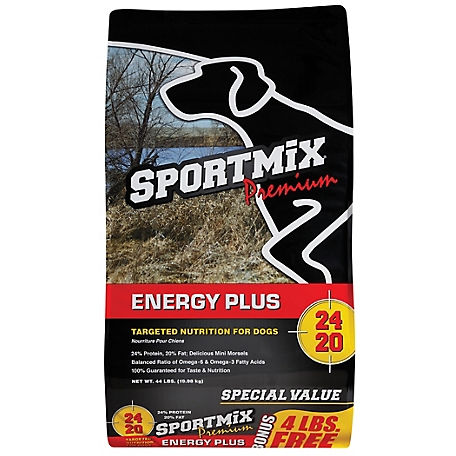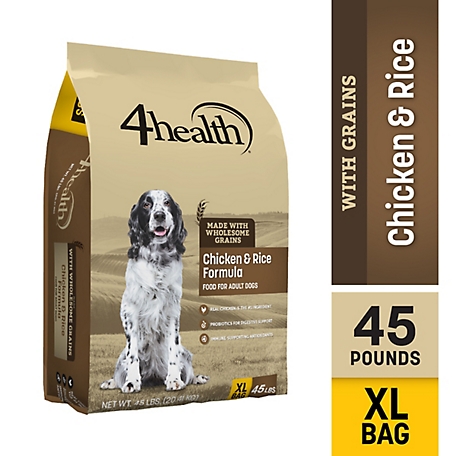Sportmix Energy Plus Adult Performance Mini Chunk Chicken Recipe Dry Dog Food
SPORTMiX Energy Plus Adult Mini Chunk Dry Dog Food (24/20) is formulated for highly active dogs needing maximum energy. Dogs participating in competition events demand a dog chow that will allow them to withstand days of grueling field trials.
SPORTMiX Energy Plus Adult Mini Chunk Dry Dog Food (24/20) is formulated for highly active dogs needing maximum energy. Dogs participating in competition events demand a dog chow that will allow them to withstand days of grueling field trials.
- Dry dog food is designed to meet the needs of high-stress working dogs
- Formulated with supplemental flaxseed, SPORTMiX Energy Plus helps ensure an improved Omega-6/Omega-3 fatty acid balance for a healthy skin and coat
- Naturally preserved and has a taste dogs love
- SPORTMiX Energy Plus dog chow is formulated to meet the nutritional levels established by the AAFCO Dog Food Nutrient Profiles for maintenance
100% Customer Satisfaction Guaranteed or bring the unused portion and receipt for a full refund.
Additional information
| Country of Origin | Made in USA |
|---|---|
| Breed Size | Extra Small, Small, Medium, Large, Extra Large |
| Flavor | Chicken |
| Health Features | Performance & Working Dog, Skin & Coat Health |
| Life Stage | Adult |
| Primary Flavor | Chicken |
| Special Diets | AAFCO Formulated, Nutrient Enriched, Omega Fatty Acids |
| Warranty | 100% Customer satisfaction guaranteed or bring back the unused portion to the store and receive a full refund. |
| Manufacturer Part Number | 2100046 |











by Pet
Dog tolerates well, firm stool, and maintains a healthy weight as a very active dog.
by Gary
Our Dogs love it and the ingredients look m,uch better than our last dog food
by Andy
My dog (American Staffordshire Terrier mix 50lbs) has skin and coat issues and this has helped keep his skin from drying out and flaking, great amount of food for the price
by Pup
Good nutrition for active pups.
by Ashley
Puts weight on them good.